Maintaining your curling iron is essential for ensuring its longevity and effectiveness. Over time, styling products can build up on the barrel, affecting its performance and even damaging your hair. Regular cleaning not only preserves the integrity of your curling iron but also promotes healthier hair by reducing the risk of product residue transfer. In this guide, we’ll walk you through how to clean curling iron barrel.
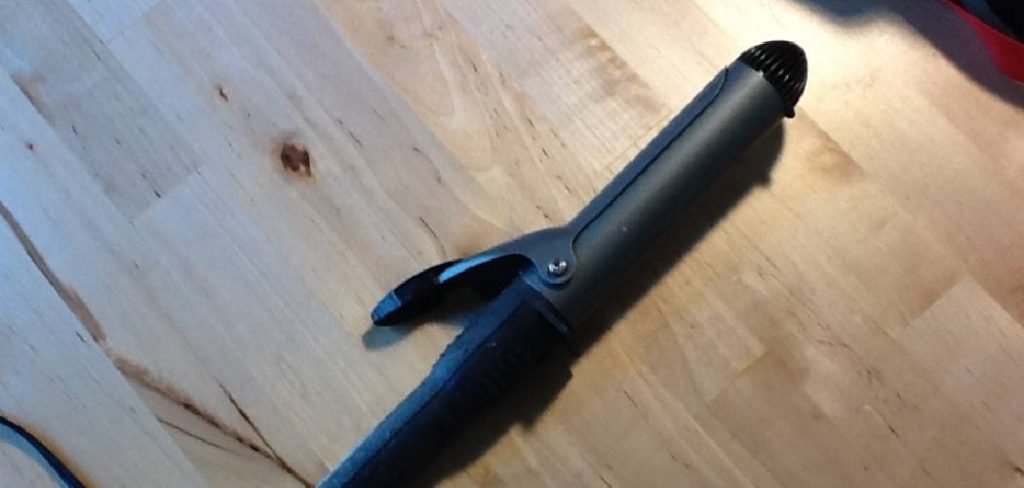
Why Regular Cleaning Is Essential
Regular cleaning of your curling iron barrel is crucial for several reasons. Firstly, accumulated product residue, such as hair sprays, gels, and serums, can create a sticky film that affects the smooth gliding of the iron through your hair. This can lead to ineffective styling and potential hair damage from excessive heat exposure. Secondly, a clean curling iron ensures more consistent heat distribution, which results in better curls and waves, maintaining your desired style throughout the day.
Lastly, regular maintenance can prevent potential damage to the curling iron itself, such as corrosion or burnt residue, thus prolonging its lifespan and saving you from the unnecessary expense of early replacement. By integrating routine cleaning into your hair care regimen, you contribute to healthier hair and optimal styling results.
Optimal Performance and Heating Efficiency
To ensure your curling iron operates at its best, it’s vital to maintain its heating elements. Regular cleaning prevents product buildup that can hinder heat distribution, resulting in inconsistent curls and potentially overheating. For optimal performance, ensure the iron heats up evenly and maintains a consistent temperature throughout use. This not only enhances styling results but also minimizes the risk of damage to your hair. Clean the barrel as needed and inspect the power cord and plug for signs of wear and tear, as frayed wires can affect heating efficiency and pose safety hazards. By following these practices, you’ll extend the life of your curling iron and achieve silky, smooth curls with every use.
Materials You’ll Need
To effectively clean your curling iron barrel, you will need the following materials:
- Soft Cloth or Microfiber Towel: Ideal for wiping away residue without scratching the barrel.
- Rubbing Alcohol: Helps to dissolve and remove accumulated styling products and residue.
- Cotton Pads or Swabs: Useful for cleaning around hard-to-reach areas and detailing.
- Baking Soda (Optional): Can be mixed with water to create a paste for tougher residue.
- Mild Dish Soap: For gentle cleaning when combined with water for a more thorough wash.
- Toothbrush with Soft Bristles: Helps to scrub away stubborn debris without damaging the barrel.
- Small Bowl of Water: To rinse the barrel and remove any remaining cleaning agents.
Having these materials on hand will ensure a thorough and effective cleaning of your curling iron, keeping it in optimal condition.
10 Proven Methods on How to Clean Curling Iron Barrel
1. Rubbing Alcohol
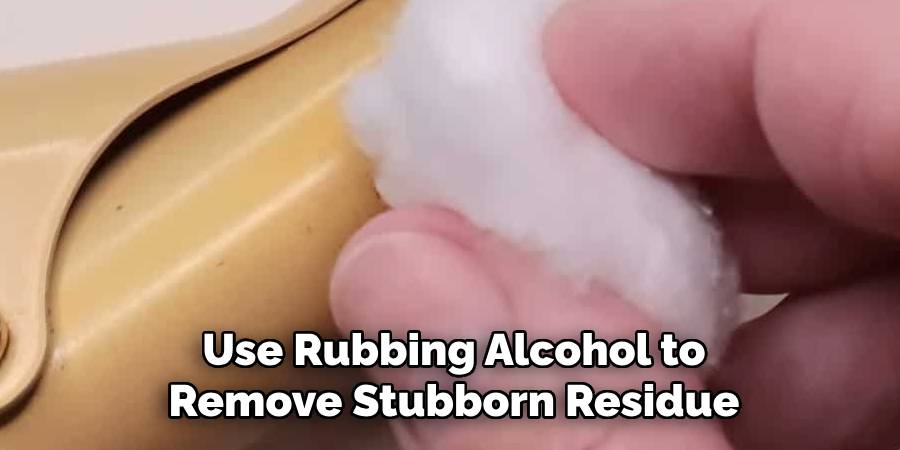
Use rubbing alcohol to remove stubborn residue from the iron. Dampen a cloth with alcohol and gently rub the barrel, paying particular attention to areas with visible buildup. This method is effective for dissolving product residue like hairspray. Ensure the iron is unplugged and cool before cleaning.
2. Baking Soda Paste
Baking soda acts as a natural abrasive cleaner. Make a paste with baking soda and water, apply it to the barrel, and gently scrub with a toothbrush. This can help remove tough stains without scratching the surface.
3. White Vinegar Solution
White vinegar is known for its degreasing properties. Mix equal parts vinegar and water, dip a cloth into the solution, and wipe the barrel. It’s perfect for breaking down oils and product buildup while being gentle enough not to damage the appliance.
4. Magic Eraser
A magic eraser can be your best friend for cleaning curling irons. Simply dampen it and rub over the barrel to effectively remove grime and residues. Ideal for those hard-to-shift marks without the use of chemicals.
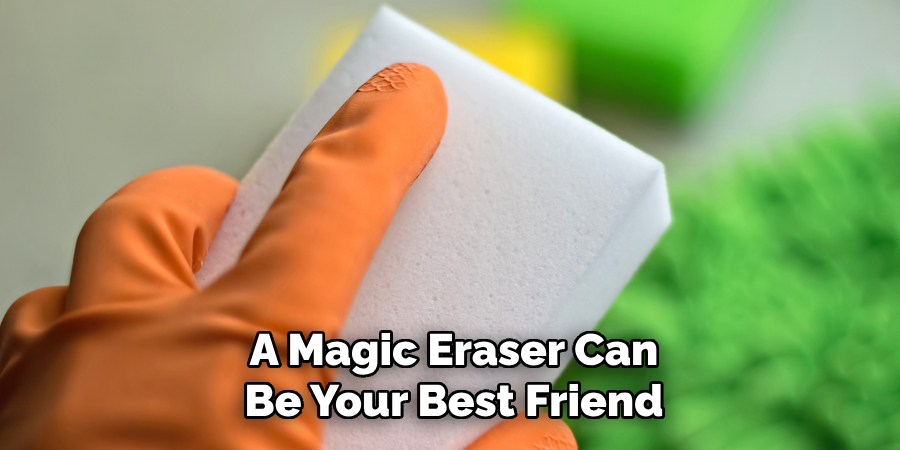
5. Clean When Warm
For easier removal of buildup, clean the barrel while it’s still warm (but not hot). A damp cloth can effectively wipe away softened residue before it hardens. Always take caution to avoid burns by ensuring your curling iron is only lightly warmed.
6. Hydrogen Peroxide
Hydrogen peroxide can help disinfect and clean your curling iron barrel. Apply it with a cotton pad to clean off product buildup. Leave it on for a few minutes before wiping with a damp cloth to ensure residue removal.
7. Dish Soap and Water
Simple and effective, dish soap mixed with warm water can clean curling iron barrels. Use a cloth or sponge dipped in soapy water to scrub the barrel gently for a thorough clean-up. Rinse with a damp cloth and dry completely before storing.
8. Vinegar-Infused Wipes
For salon professionals and constant users, vinegar-infused wipes provide a quick solution. They help keep the barrel clean between uses and are easy to keep at hand in your styling kit.
9. Lemon Juice
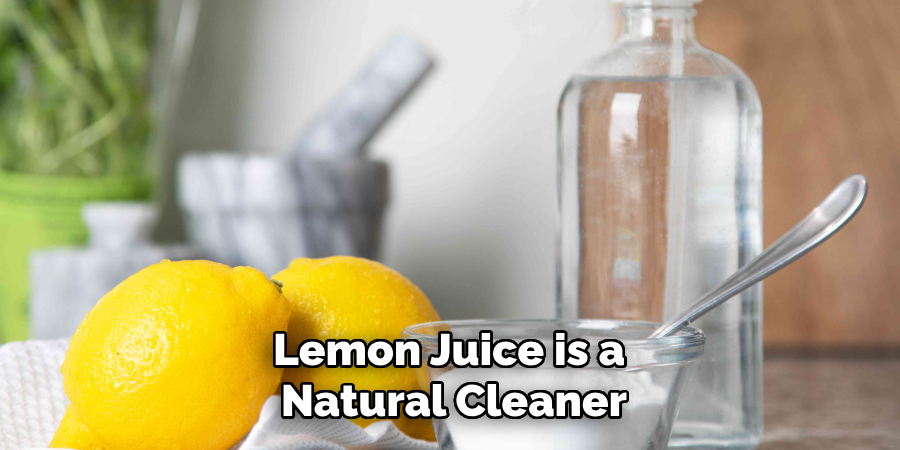
Lemon juice is a natural cleaner with antibacterial properties. Apply directly with a cloth to the curling iron and wipe the barrel to cut through grease and add a refreshing scent.
10. Ammonia Solution
For particularly tough buildup, an ammonia solution might be necessary. Mix water with a small amount of ammonia, dampen a cloth, and use it to clean the barrel thoroughly. Ensure the area is well-ventilated when using this method.
Maintenance and Upkeep
Beyond regular cleaning, ongoing maintenance and upkeep of your curling iron are essential to ensure it remains safe and functions optimally over time. Here are some key practices to incorporate:
- Inspect the Cord Regularly: Regularly check the power cord for any signs of fraying, cracks, or damage. A compromised cord can lead to electrical hazards or inefficient heating. If you notice any issues, discontinue use immediately and seek repair or replacement.
- Proper Storage: Store your curling iron in a heat-resistant cover or bag when not in use. Avoid wrapping the cord tightly around the barrel, as this can lead to damage over time. It is best stored hanging up or lying flat.
- Adjust Heat Settings Appropriately: Use the temperature setting appropriate for your hair type to prevent unnecessary strain on the heating elements and to reduce the risk of hair damage. Lower settings are generally safer for fine or thin hair, while higher settings may be used for thicker or coarse hair.
- Allow Full Cooling: After each use, ensure the curling iron is completely cool before cleaning or putting it away. This protects both your hands from burns and the tool from unnecessary wear.
- Check for Loose Parts: Occasionally examine the barrel and handle for any loose screws or parts. Tighten any you find carefully, or seek professional servicing if necessary.
- Service and Repair: Consider professional servicing if your curling iron frequently overheats, under-heats, or doesn’t function as expected. Regular servicing can keep this essential styling tool in top condition and prolong its lifespan.
Troubleshooting Common Issues
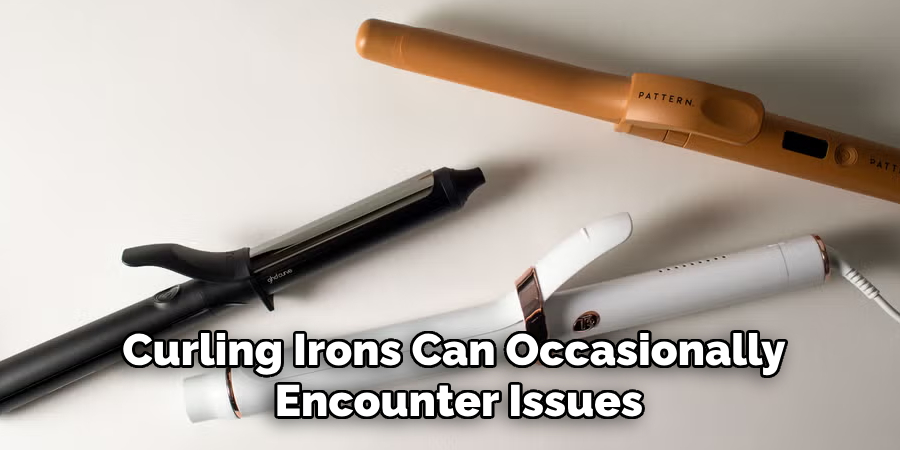
Even with regular cleaning and maintenance, curling irons can occasionally encounter issues that disrupt their performance. Here’s how to troubleshoot some common problems:
- Iron Not Heating: If your curling iron isn’t heating up, start by checking the power source and ensuring the device is securely plugged in. Test it in a different outlet to rule out electrical issues. Inspect the power cord for any damage that could impede electrical flow. If these steps do not resolve the problem, the internal heating element may be faulty, requiring professional repair or replacement.
- Inconsistent Heat: When the temperature fluctuates unexpectedly, it could be due to faulty heat controls or an aging heating element. Ensure the temperature settings are correctly adjusted for your styling needs. If the problem persists, it might necessitate replacing the device, especially if it frequently produces inconsistent results.
- Sticky Residue: If buildup from styling products continues to cause sticky residue despite regular cleaning, consider altering your product routine. Opt for lighter or heat-protective sprays that are less likely to adhere to the barrel.
- Damaged Barrel Surface: A barrel that becomes scratched or chipped can snag hair and lead to uneven styling. If the damage is significant, avoid using the tool as it can damage your hair further. It’s best to replace the curling iron in such cases.
- Curling Iron Smells: Unpleasant odors emanating from your curling iron could be due to residue that has baked onto the barrel or internal electrical issues. Perform a thorough cleaning as a first step. If the smell persists, discontinue use and have the tool inspected for safety.
By addressing these common issues with thoughtful troubleshooting steps, you can maintain the functionality and safety of your curling iron, ensuring smooth and beautiful styling results every time.
Conclusion
Proper cleaning, maintenance, and troubleshooting of your curling iron are essential steps toward achieving a reliable and effective hair styling experience. By incorporating these practices, you not only enhance the longevity of your tool but also ensure your hair remains healthy and undamaged. Regular inspections and mindful usage can prevent common issues, saving you time and frustration in your styling routine. Remember, a well-maintained curling iron not only performs better but also contributes to safer hair care practices. Thanks for reading, and we hope this has given you some inspiration on how to clean curling iron barrel!
Edmund Sumlin is a skilled author for Metal Fixes, bringing 6 years of expertise in crafting a wide range of metal fixtures. With a strong background in metalwork, Edmund’s knowledge spans various types of fixtures, from decorative pieces to functional hardware, blending precision with creativity. His passion for metalworking and design has made him a trusted resource in the industry.
Professional Focus:
- Expert in Metal Fixtures : Edmund aesthetic specializes in creating durable and innovative metal fixtures, offering both appeal and functionality. His work reflects a deep understanding of metalworking techniques and materials.
- Sustainability Advocate : He is dedicated to using sustainable practices, ensuring that every fixture is crafted with eco-friendly methods while maintaining high-quality standards.
In his writing for Metal Fixes, Edmund provides valuable insights into the latest trends, techniques, and practical advice for those passionate about metal fixtures, whether they are professionals or DIY enthusiasts. His focus on combining artistry with engineering helps others discover the true potential of metal in design.


